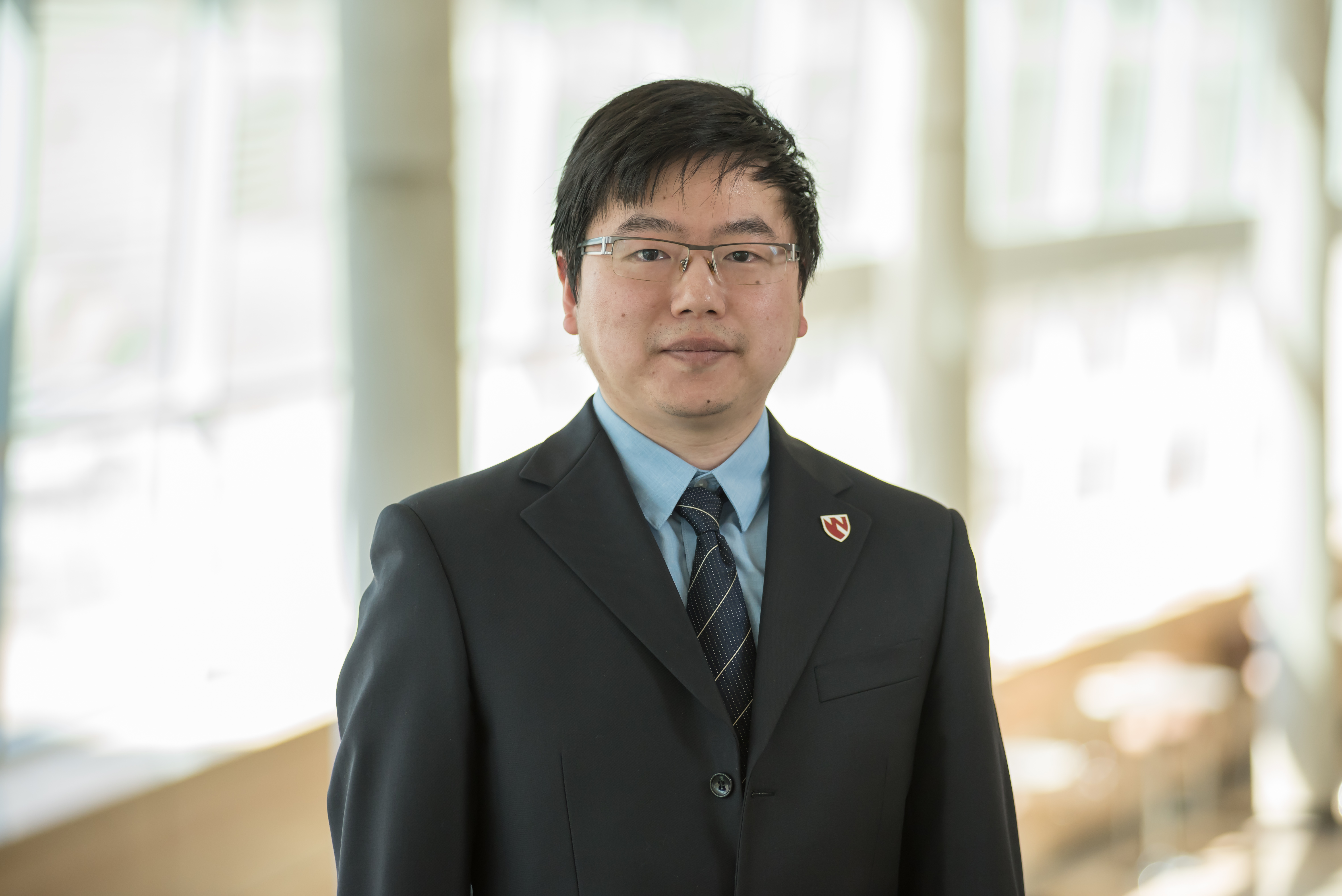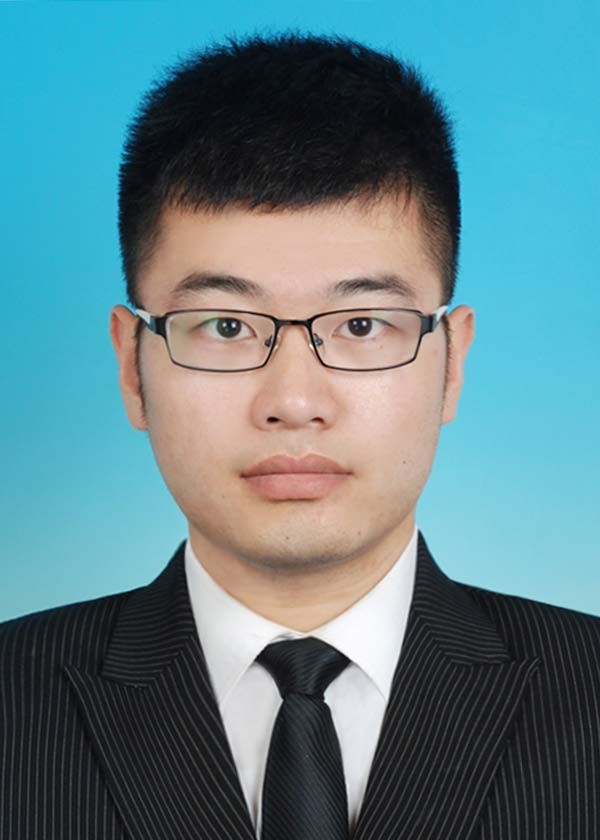
Research
Dr. Zhao’s lab aims to develop innovative electrical engineering approaches and technologies to facilitate the diagnosis and treatment of human diseases. Our current research is focused on three aspects: 1) To develop biologically matched, ion current-based electrical stimulation systems that can safely and effectively apply high-intensity, therapeutic electrical currents to human tissues with high spatial resolution. 2) Based on our ion current electrical stimulation systems, we will develop localized and highly efficient intraocular and transdermal iontophoretic drug delivery systems. 3) We will also develop novel electrical stimulation systems for efficacious rehabilitation of muscles and nerves after peripheral nerve injuries. We use finite-element computer simulation, laser micromachining, fast prototyping, in vitro cell cultures, ex vivo tissue models and in vivo animal models in the development and testing of our devices.
Job Opportunities
02/28/2022 – We are currently hiring two postdoctoral associates to work on our chronic wound healing, intraocular/transdermal drug delivery projects (funded by NIH and Nebraska DHHS).
Passionate researchers with expertise in related research fields and/or experience in biomedical device development, biomaterials, bioelectricity, or cell and animal studies are welcome to apply. Candidates should have enthusiasm for scientific research and a track record of academic success. Qualified applicants should have a Ph.D. or equivalent degree in related fields, excellent oral communication and scientific writing skills and the ability to work independently on various projects.
Interested individuals please contact Dr. Siwei Zhao at Siwei.zhao@unmc.edu.
Publications
After joining UNMC (# denotes corresponding author):
- Fan Zhao#, Shan Fan, Deepta Ghate, Svetlana Romanova, Tatiana K. Bronich, Siwei Zhao#, A hydrogel ionic circuit-based high-intensity iontophoresis device for intraocular macromolecules and nanoparticles delivery, Advanced Materials, 2022, 34, 2107315. DOI: 10.1002/adma.202107315.
- Siwei Zhao#, Abijeet Singh Mehta, Min Zhao, Biomedical applications of electrical stimulation, Cellular and Molecular Life Sciences, 2020 Jul; 77(14), pp2681-2699. DOI: 10.1007/s00018-019-03446-1.
Before joining UNMC:
- Siwei Zhao, Chengchen Guo, Allison Kumarasena, Fiorenzo G. Omenetto and David L. Kaplan, 3D printing of functional microalgal silk structures for environmental applications, ACS Biomater. Sci. Eng. 2019, 5, 9, 4808–4816
- Yu Wang, Wenyi Li, Meng Li, Siwei Zhao, et al., Biomaterial‐Based “Structured Opals” with Programmable Combination of Diffractive Optical Elements and Photonic Bandgap Effects, Advanced Materials, 2019, 31 (5), 1805312
- Jiannan Li, Siwei Zhao, et al., Combinatorial Peptide Microarray Synthesis Based on Microfluidic Impact Printing, ACS Combinatorial Science, 2018, 21 (1), pp 6-10
- Siwei Zhao, et al., Programmable hydrogel ionic circuits for biologically-matched electronic interfaces, Advanced Materials, 2018, 30 (25), 1800598
- Jiannan Li, Randy P. Carney, Ruiwu Liu, Jinzhen Fan, Siwei Zhao, et al., Microfluidic Print-to-Synthesis Platform for Efficient Preparation and Screening of Combinatorial Peptide Microarrays, Analytical Chemistry, 2018, 90, pp 5833–5840
- Zhenghua Zhu, Shengjie Ling, Jingjie Yeo, Siwei Zhao, et al., High-strength, durable all-silk fibroin hydrogels with versatile processability toward multi-functional applications, Advanced Functional Materials, 2018, 28, 1704757
- Wenda Zhou, Ying Chen, Terrence Roh, Yinan Lin, Shengjie Lin, Siwei Zhao, et al., Multifunctional bioreactor system for human intestine tissues, ACS Biomaterials Science and Engineering, 2018, 4, pp 231–239
- Paolo Minzioni, Roberto Osellame, Cinzia Sada, Siwei Zhao, et al., Roadmap on optofluidics: Silk fibroin films for biophotonic and microfluidic applications (invited review), Journal of Optics, 2017, 19, 093003
- Peter Tseng, Bradley Napier, Siwei Zhao, et al., Directed assembly of bio-inspired hierarchical materials with controlled nanofibrillar architectures, Nature Nanotechnology, 2017, 12, pp 474–480
- Peter Tseng, Siwei Zhao, et al., Evaluation of Silk Inverse Opals for “Smart” Tissue Culture, ACS Omega, 2017, 2 (2), pp 470–477
- Siwei Zhao, et al., Bio-Functionalized Silk Hydrogel Microfluidic Systems, Biomaterials, 2016, 93, 60-70
- L Tozzi, CA Di Buduo, WK Raja, Y Chen, Siwei Zhao, et al., Silk Based Microfluidic Device for the Imaging of Platelet Production, Tissue Engineering Part A, 2015, 21, S246-S247
- Gao, Siwei Zhao, et al., A large-scale screen reveals genes that mediate electrotaxis in Dictyostelium discoideum, Science Signaling, 2015, Vol. 8, Issue 378, pp. ra50
- Siwei Zhao, et al., ElectroTaxis-on-a-Chip (ETC): an Integrated Quantitative High-throughput Screening Platform for Electrical Field-Directed Cell Migration, Lab Chip, 2014,14, 4398-4405
- Lin Cao, Colin D McCaig, Roderick H Scott, Siwei Zhao, et al., Polarizing intestinal epithelial cells electrically through Ror2, Journal of Cell Science, 2014, 127: 3233-3239
- Siyuan Xing, Siwei Zhao and Tingrui Pan, Print-to-print: a facile multi-object micro-patterning technique, Biomedical Microdevices, 2013, Volume 15, Issue 2, pp 233-240
- Lin Cao, Dongguang Wei, Brian Reid, Siwei Zhao, et al., Endogenous electric currents might guide rostral migration of neuroblasts, EMBO reports, 2013, 14, 184-190
- Xinwei Wang, Siwei Zhao, et al., Bubble formation on superhydrophobic-micropatterned copper surfaces, Applied Thermal Engineering, vol. 35, pp. 112-119, March 2012
- Siwei Zhao, et al., Stereomask lithography (SML): a universal multi-object micro-patterning technique for biological applications, Lab Chip, 2011, 11, 224-230
- Wei Wang*, Siwei Zhao* and Tingrui Pan, Lab-on-a-print: from a single polymer film to three-dimensional integrated microfluidics, Lab Chip, 2009, 9, 1133 – 1137. *: joint first author
- Siwei Zhao, et al., Direct projection on dry-film photoresist (DP2): do-it-yourself three-dimensional polymer microfluidics, Lab Chip, 2009, 9, 1128 – 1132
- Siwei Zhao, et al., Linearity and dissociative antigen noise analyses of competitive microfluidic heterogeneous immunoadsorption, Biomedical Microdevices, 2008, 10(4), pp519-529
Book Chapters
- Trisha M. Pfluger and Siwei Zhao, The Impact of Electric Fields on Cell Processes, Membrane Proteins and Intracellular Signaling Cascades, Conductive Polymers: Electrical Interactions in Cell Biology and Medicine, CRC Press, April 14, 2017
- Siwei Zhao, Arnold Chen, Alex Revzin and Tingrui Pan, Stereomask lithography for multi-protein patterning, Methods in Cell Biology Volume 119 Micropatterning in Cell Biology Part A, ELSEVIER, 2014
- Siyuan Xing, Siwei Zhao, Tingrui Pan, Print-to-Print: Printer-Enabled Out-of-Cleanroom Multiobject Microprinting Method, Methods in Cell Biology Volume 119 Micropatterning in Cell Biology Part A, ELSEVIER, 2014
Patents and Patent Applications
- Siwei Zhao, Fan Zhao. International Application for Patent No. PCT/US2021/043718 entitled “Hydrogel Ionic Circuit Based Devices for Electrical Stimulation and Drug Therapy” filed July 29, 2021.
- Siwei Zhao, Bin Duan. US Provisional Patent Application No. 63/192,170 entitled “Hydrogel Ionic Circuit-based Electrical Stimulation System” filed May 24, 2021.
- David L. Kaplan, Siwei Zhao, Fiorenzo G. Omenetto. US Provisional Patent Application No. 62/840,295 entitled “Systems and Methods for Living Silk Articles” filed April 29, 2019.
- Siwei Zhao, Peter Tseng, Jonathan Grasman, Yu Wang, Fiorenzo G. Omenetto, David L. Kaplan, US Patent Application No. 16/153,759 entitled “Programmable Hydrogel Ionic Circuits for Biologically-Matched Electronic Interfaces” filed October 6, 2018.
- David L. Kaplan, Sarah Lightfoot Vidal, Rosalyn Abbot, Siwei Zhao, Dana Cairns, Fiorenzo G. Omenetto. US Patent Application No. 16/314,169 entitled “Innervated Artificial Skin” filed Jun 30, 2017
- Lightfoot Vidal, R. Abbott, S. Zhao, F. Omenetto, D. L. Kaplan. US Provisional Patent Application No. 62/357,775 entitled “Innervated Artificial Skin” filed July 1, 2016.
Lab Members
Dr. Siwei Zhao, Principal Investigator
B.S. in Microelectronics, Peking University, 2003 – 2007
Ph.D. in Biomedical Engineering, University of California Davis, 2007 – 2013
Postdoc in Biomedical Engineering, University of California Davis, 2013 – 2014
Postdoc in Biomedical Engineering, Tufts University, 2014 – 2019
Google Scholar: https://scholar.google.com/citations?user=Iez77DwAAAAJ&hl=en
Linkedin: https://www.linkedin.com/in/siwei-zhao-634b1312/
ResearchGate: https://www.researchgate.net/profile/Siwei-Zhao-5
Dr. Siwei Zhao received his B.S. degree in 2007, from the Department of Microelectronics, Peking University. He then conducted his Ph.D. study in the Department of Biomedical Engineering at the University of California, Davis with Prof. Tingrui Pan. His doctoral research was mainly focused on the development of novel and unconventional fabrication techniques for microfluidics and lab-on-a-chip devices. He has applied these devices to both basic biomedical studies and translational research, including using high throughput lab-on-a-chip devices to study cellular response to electrical stimulation and using microfluidic systems to synthesize and screen large random peptide libraries for cancer-specific ligands. He received his Ph.D. in 2013. After that, he joined Prof. David Kaplan’s group as a postdoctoral research associate at Tufts University. In Kaplan lab, his research centered on the development of hydrogel biomaterial-based engineering systems with improved biological interface. A silk hydrogel microfluidic scaffold was developed for long-term, three dimensional tissue culture and the results were published in Biomaterials. At the same time, he utilized hydrogel materials to redesign electrical circuits. A new hydrogel-based circuit system, capable of conducting ion currents, was developed. This hydrogel ionic circuit was mechanically compliant and was able to deliver electrical stimulation to biological tissues. The results were reported in Advanced Materials. Since March 2019, he became an Assistant Professor at the University of Nebraska Medical Center (UNMC). He is a part of the Holland Regenerative Medicine Program and his home department is the Department of Surgery-Transplant. He is highly motivated to pursue an interdisciplinary research career at the interface of the life sciences and engineering. His current research interests include developing truly biologically matched electrical systems to significantly improve the efficacy and safety of electrical stimulation-based therapies for wound healing, nerve regeneration, pain management and drug delivery.

Dr. Fan Zhao, Postdoctoral Research Associate
Dr. Fan Zhao received his Ph.D degree in Biomedical Textile Materials and Technologies from the Donghua University, Shanghai, China in 2019. He joined Zhao Lab in July 2019 as a postdoctoral research associate. His research interests include development of wearable and implantable ionic-based medical devices for intraocular drug delivery and wound healing.
Alumni
Junying Wang PhD – Postdoc Associate
Neal C. Weldon – first year medical student research intern
Zoey Bieranowski and Jawad Haider – high school student research interns
Research News
12/30/2019 – Dr. Zhao wins GP IDeA CTR Superstar Competition
https://www.unmc.edu/news.cfm?match=24849
Job Opportunities
We currently have openings for postdoctoral research associates to work on our chronic wound healing, tissue regeneration and drug delivery projects (funded by NIH and Nebraska DHHS).
Passionate researchers with expertise in related research fields and/or experience in biomedical device development, biomaterials, nanomaterials, bioelectricity, or cell and animal studies are welcome to apply. Candidates should have enthusiasm for scientific research and a track record of academic success. Qualified applicants should have a Ph.D. or equivalent degree in related fields, excellent oral communication and scientific writing skills and the ability to work independently on various projects.
Interested individuals please contact Dr. Siwei Zhao at Siwei.zhao@unmc.edu.

